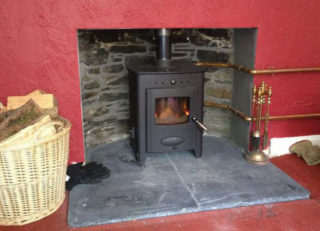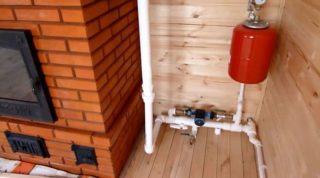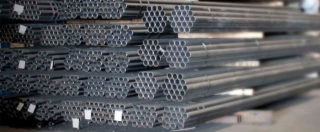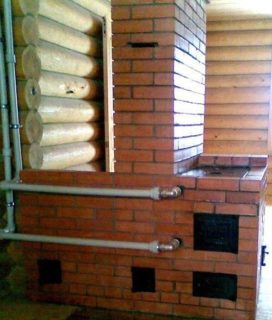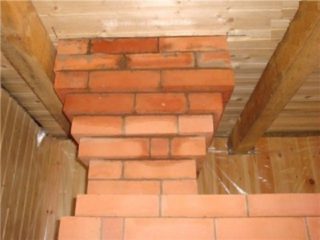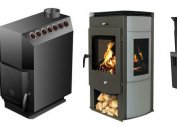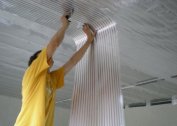The market offers many appliances for heating a home based on natural gas. However, in many regions, coal or firewood is more affordable. In this case, the heating system is connected to another device. Water heating in a private house from a wood-burning stove can be used if the area of the building is large, and the operation of other structures will be expensive.
The principle of operation of the stove with water circuits
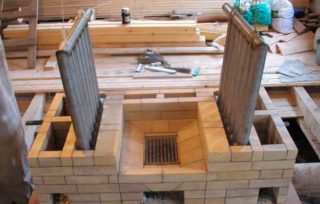
The principle of operation of the furnace for a house with water heating is to heat the coolant in the process of fuel combustion. After that, it is distributed through a pipeline, from which heat is transferred to the surrounding space.
The heat exchanger is located inside the stove. You can use the device as the main source of heat or additional. Moreover, the device provides not only heating, but also hot water supply. Such a furnace more efficiently uses and distributes heat.
Advantages and disadvantages
Heating furnaces are highly efficient. For 1 hour, the device can warm up a house with an area of up to 300 sq.m. Also, the device has such advantages:
- affordable cost of equipment that can be constructed independently;
- lack of dependence on the electric network - the system operates on the principle of natural circulation, pumping equipment is not used;
- the availability and relatively low cost of fuel;
- beautiful appearance;
- with proper installation and operation, the device is able to heat the house;
- no need to constantly add fuel - just load the stove 2-3 times a day;
- the device can be made from available materials with your own hands.
However, the stove has a low efficiency. Gas or diesel boilers provide a higher ratio. The device cannot be equipped with automatic fuel supply. Only manual control is permissible.
The main properties of furnaces
The furnace with a water circuit is used in country houses, in cottages. A device in the form of a fireplace is often installed in luxury interiors, performing 2 functions: decorative and heating the room. The design has the following properties:
- installed in a room in which the minimum fire safety conditions are present;
- products come with prismatic, panoramic and straight doors (the first option is the most expensive);
- furnace performance ranges from 12-24 kW;
- according to the type of connection, the design can be open or closed (for the manufacture of the first type, material is used with a thickness of 4 mm at a pressure of 1.5 atm, and the second - metal with a thickness of 6 mm at a pressure of 2.5 atm);
- not only firewood is used as fuel, but also pellets, coal;
- a non-combustible base is arranged under the fireplace: a metal, ceramic or asbestos sheet.
Furnaces of this type are with a damper or a heat generator. The second option is more effective, as it is an additional source of heat. These designs are designed for long burning. The product should be equipped with a chimney 4-8 m high. The system can easily be combined with underfloor heating.
Water heating device
The choice of the furnace and the construction of the entire system is carried out at the planning and construction stage of the house itself. Most models require the construction of an additional foundation.Heating based on a furnace with a water circuit consists of the following components:
- furnace construction;
- heat exchanger (it is located inside the furnace or around it, as well as in the form of a coil around the chimney);
- coolant circuit, radiators;
- expansion tank, which is best placed in the attic.
In some cases, the heating circuit is equipped with a circulation pump. Installing a heat accumulator will increase the efficiency of the stove.
Water is used as a heat carrier. To prevent freezing of the liquid, salt can be added to it. Instead of water, you can use a glycerin filler.
Pipe selection
The use of a furnace with a water circuit for heating a house involves the use of radiators and pipes. Not only cast iron or steel elements are suitable, but also metal-plastic, polypropylene. However, there are some features. Since firewood is used for heating and there is an open flame, the liquid in the coil can boil. In such conditions, plastic pipes do not withstand a long time. It is better to use stainless steel products.
Another reason for choosing metal pipes is that the pipes that exit the furnace are very hot. In such conditions, plastic products melt. Pipes that are connected directly to the nozzles should have a diameter of 3 cm. For other elements, this figure is 2 cm.
Stove selection
You can choose a heater taking into account the technical parameters and the purpose of the device. According to the second feature of the device, there are:
- For heating. The generated thermal energy is used only for space heating. In this type of furnace, a heat exchanger tank is installed.
- For cooking and heating homes. The design of the device provides an additional compartment. An oven is located above the combustion chamber. The heat exchanger can be located on the sides of the furnace. On small stoves, only a hotplate may be present.
From the technical characteristics, the area of the house, the fuel used and the material of manufacture are taken into account. The first parameter provides that for every 10 sq.m. The construction area requires 1-1.2 kW of energy. At the same time, the ceiling height is 2.5-2.7 m.
Coal, peat, pellets, firewood are used as fuel. All of them have different characteristics: during the combustion of the same volume a different amount of heat is generated. The cost of fuel and its availability are also taken into account.
For the manufacture of the furnace uses the following materials:
- Brick. This option has a large weight and dimensions, therefore, requires an additional foundation during the arrangement. This design gives off heat evenly and for a long time. For laying a fireplace stove, you need a specialist. However, the brickwork fits perfectly into any interior, creating a special atmosphere and comfort.
- Cast iron. This material is characterized by rapid heating, but it is heavy and more fragile than others. It does not require the construction of a separate foundation.
- Steel. The presented option is popular, as it is lightweight, durable. The coolant in it heats up faster.
A furnace with a heat exchanger does not have the disadvantages of old designs, but you need to choose and install it correctly. Factory models are often equipped with legs that are adjustable. This feature allows you to install the design even on an uneven base.
Furnace heat exchanger
The heat exchanger is the main element of the furnace, therefore, the choice must be approached responsibly. It can be mounted in a furnace, but there is always a risk of coolant leakage. A safe option is to install the heat exchanger in the chimney hood. This element has a different shape and material of manufacture:
- From sheet steel. It can be installed directly into the furnace. The thickness of the material is 3-4 mm. 2 pipes are brought to it. The top should be connected at the highest point of the exchanger. The internal gap of this element should not be less than 3 cm. In this case, boiling of the coolant can be avoided.
- From the pipes. Elements can be round or rectangular. The pipe is also allowed to be installed in the furnace. It all depends on the design of the furnace. The main requirement is to install the heat exchanger so that it does not block the door, and the firewood is free.
- Flat case. This option is often installed in the chimney channel. The heat exchanger can last a long time, since it is not used in aggressive conditions. It has a large size.
The right choice of heat exchanger will ensure maximum productivity of the stove.
How to do it yourself
To warm the house in winter cold, the heating system can be built independently. To make a furnace with a heat exchanger for heating, you must follow the procedure:
- Making a furnace from sheet material. Prepared elements are welded together at an angle of 90 degrees. An exception is the front wall. The bottom of the apparatus should be at least 20 cm from the floor.
- The space between the furnace and the blower is separated by the grate.
- Preparing canopies and installing doors.
- Installation of the chimney. It is installed at the top of the structure.
- Preparation of a container for liquid and its fixation.
After connecting the device to the system, it should be checked for defects. The furnace must be designed and operated in compliance with safety rules.
A stove with a water heat exchanger is the best option for small residential buildings. It allows you to save money on space heating. The main advantage of the system is the possibility of its independent manufacture.
